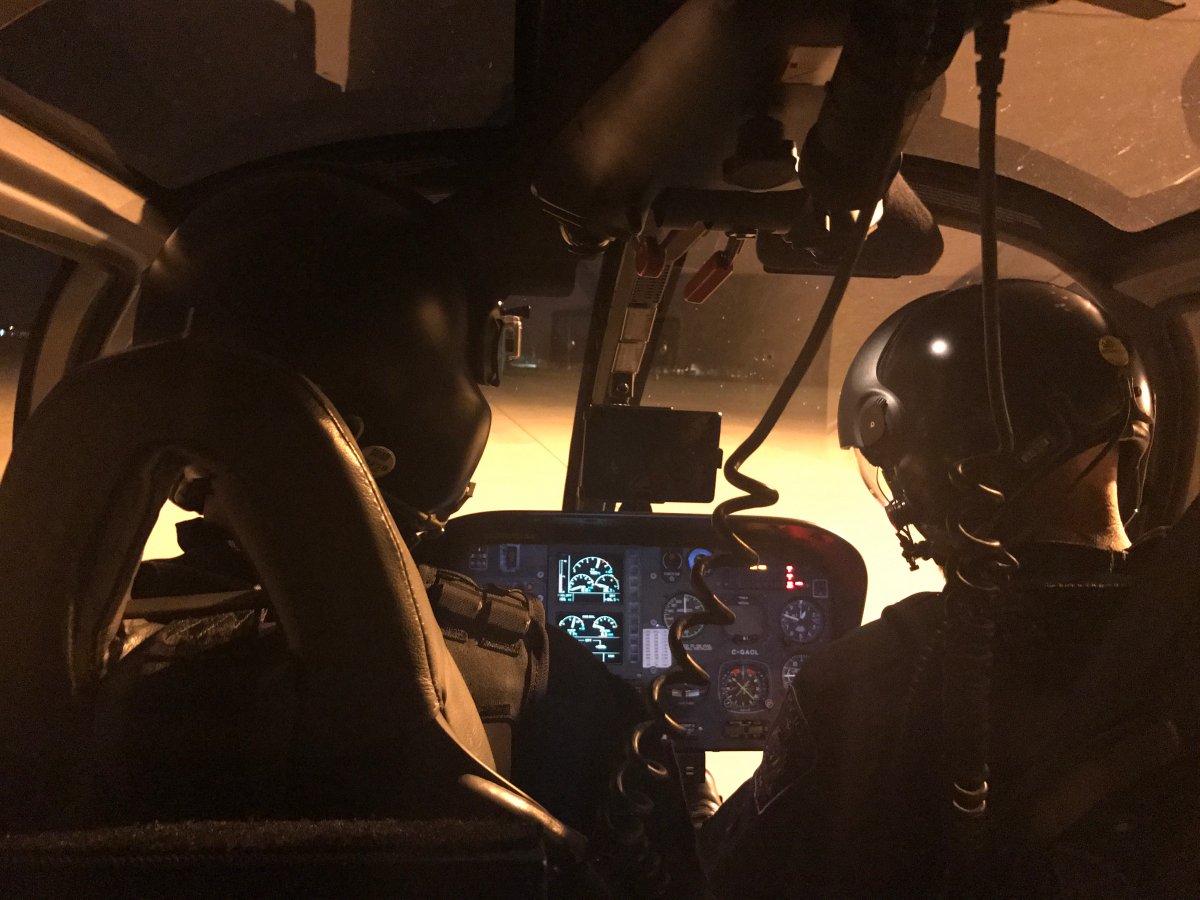WINNIPEG — When the sun sets, AIR-1 and the Winnipeg Police Service tactical flight officers hit the sky and patrol the city from above.

Each night, a team of three constables, two tactical officers and a pilot, scour the city and assist ground crews in every scenario imaginable.
RELATED: Future of Winnipeg police Air1 chopper up in the air
The primary purpose of the Flight Operations Unit (FOU) is to support all operational and investigative Service units. They help detect criminal acts and apprehend suspects.
RAW: Behinds the scenes in the AIR-1 helicopter

“Our job is to get in the area and look for possible suspects running or fleeing… people that are hanging around that can be interviewed,” Cst. Aaron Penner said. “It’s a lot more of controlling certain situations and providing information to the ground crew.”
While listening to scanners, the officers can help assist in calls across the city and relay important information to units on scene.
The helicopter can get from one end of the city to the other in less than five minutes.
Global News was given exclusive access to fly with the unit and see first hand the work they do each day.

Get breaking National news
One of the first calls that came in was a stabbing and AIR-1 was needed to help track potential suspects. Minutes later, the team was needed at a domestic disturbance.
“The call that we went to it just so happens this vehicle happened to be parked there and he did a u-turn and left right away,” Cst. Penner said. “We stayed with that vehicle just in case they were involved. That may have helped the officers on the ground. They can interview him and close the case rather than sticking with the house where nothing was going on.”
It just so happened, that vehicle was involved in two other incidents that night and officers in a different area of the city were looking for it.
READ MORE: Winnipeg police AIR1 assists in vehicle theft arrest
Tracking vehicles and suspects has become easier with newly installed high-power equipment such as a spotlight and infrared camera which picks up heat signatures the eye could never see.
“Heat signatures are very helpful. We’re in total darkness and we can see these individuals because of the heat signatures that their bodies give off,” Insp. Lutz said.
But it’s not just people that give off heat signatures, but cars as well. Officers are able to tell if a vehicle has been driving a substantial amount of time and if it was recently driven just by the heat from the hood and tires.
RELATED: RCMP loan infrared camera to Winnipeg police to help get Air1 off ground
- Intimate partner violence is an ‘epidemic.’ What more should be done?
- Montreal man sentenced in U.S. for exporting weapon components to Russia
- Ontario jewelry store owner fights off thieves with broom: ‘Never seen anything like this’
- Russian-Montrealer sentenced in U.S. for illegal electronics exports to help Putin’s war
AIR-1 was brought into use in 2010 and has been a key resource in catching criminals and protecting officers.
“AIR-1 has kept General Patrol members out of an unsafe environment because they know someone’s sitting around the corner and waiting to ambush them,” Insp. Jon Lutz said.
When it comes to high speed chases, having the police helicopter follow dangerous, erratic drivers instead of cruisers has kept both the public and patrol members in a safer situation.
“(There was a case) where members were in a pursuit and got into a significant collision and had to get extricated out of the police car,” Insp. Lutz said. “We don’t have those with AIR-1, it takes over. Individuals in the stolen car or that are being pursued think the police have left. (They) quietly just drive to the side street and dump the car off and then we’re able to follow them and ultimately apprehend them. It’s substantially safer.
Note: Total dispatched incidents (1571) includes all calls that AIR1 attended (1406) as well as the total events that were cancelled or pre-empted (165) prior to arriving on scene.
AIR-1 assisted in more than 1,400 calls in 2016. Those include a wide-spectrum of incidents from homicide cases and domestic assaults to weapons calls or missing person cases.
“What sticks out for me are the life-saving events,” Insp. Jon Lutz said. “There are some (situations) where I can say without question that AIR-1 was absolutely responsible in saving lives. There were a number of incidents where, if it weren’t for AIR-1, we would be having very difficult conversations with families telling them that they’ve lost loved ones.”















Comments